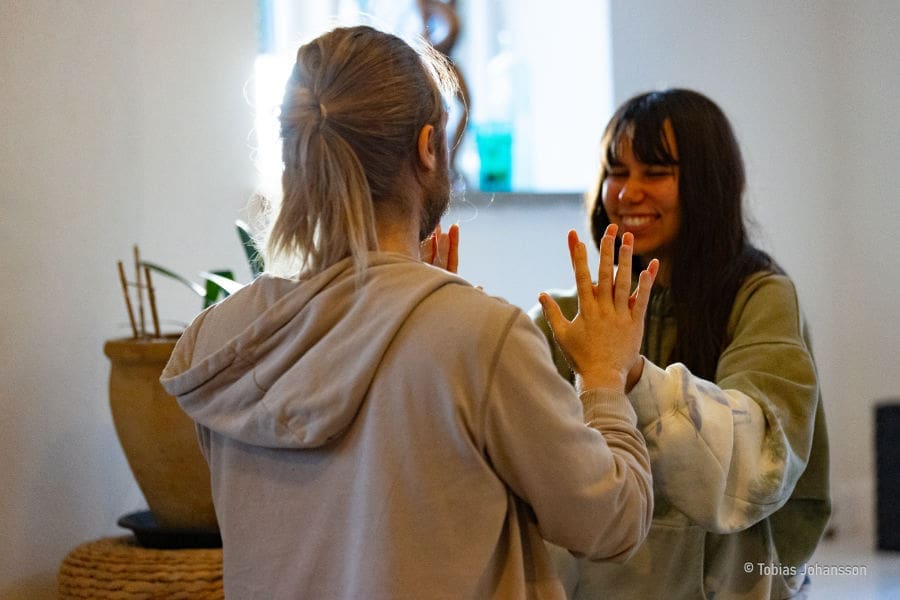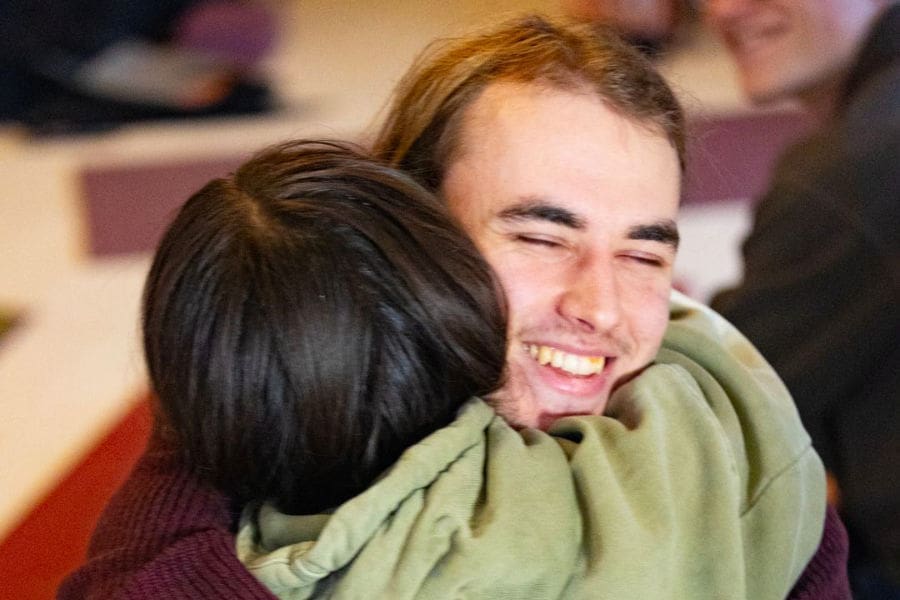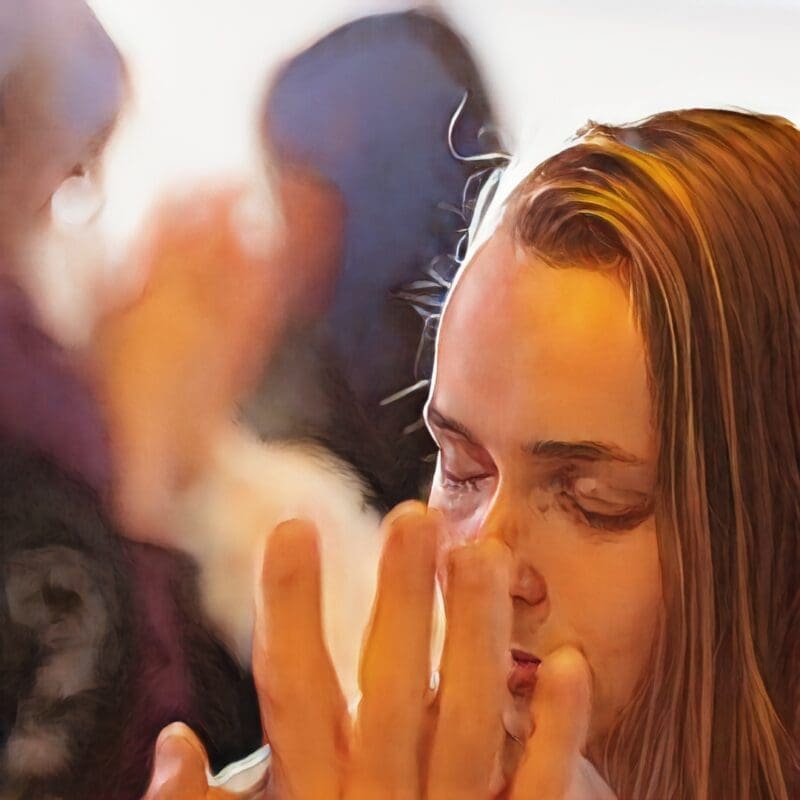Tantra is NOT about sex. It is about achieving a profound experience of life, where everything is experienced through the heart.
What Is Tantra?
Tantra is not a doorway to indulgence, as many believe, but a bridge to wholeness. It is the art of weaving the sacred into everyday life, dissolving the barriers of ego, and awakening a deeper way of being.
This ancient practice does not shy away from desire—it illuminates it, revealing love not as possession but as pure presence. Tantra breathes vitality into relationships, lifting them beyond routine and into a space where souls meet unguarded, where connection is not just felt but lived, and where life itself becomes a meditation in motion.
Traditional Tantra (often referred to as Classical Tantra) teaches methods that help you reach a deep state of meditation. It’s not about sex! It’s not a way to escape this world, but rather a way to live a fuller more complete life, and to put spirituality at the center of daily living.
This is yoga is for those seeking deeper, more authentic connections—not just with themselves and others, but with very source of life itself.
The fast track to enlightenment
Westernized neo-tantra has become a spiritual “mall” where everything is for sale, often with the promise of quick spiritual progress. However, the teachings of classical tantra require time, dedication, and patience. Qualities that seem in short supply in our contemporary culture that demands quick results and instant gratification. Many so-called spiritual aspirants are not willing to invest the necessary effort and time to develop deeper presence, and settle for the rollercoaster of highs and lows that physical indulgence and pleasure brings.
It’s not a terrible way to live—greater body awareness and better communication in relationships is a good thing. However, the promise of neo-tantra falls far short of what is possible with authentic practice.
Don’t buy into the glossy advertising and promise of conscious relationships achieved over a few weekend retreats. This is a dangerous trend that promotes the ritualization of sex at the expense of the spiritualization of life.
The Vigyan Bhairav Tantra
The Vigyan Bhairav Tantra teaches that intense experiences can carry us into bhairava (also known as samadhi), the state beyond conscious being. We can use this experience to live with full presence. Within this text are more than 100 forms of meditation, or gateways to samadhi.
Of these only three are related to sexuality.
All activities that alert your senses can be used to achieve the state of bhairava: experiences such as enjoying good food, dancing, listening to music, or losing yourself in the serenity of nature. Classical tantra is a wide-ranging and comprehensive set of practices that include practices for day to day living, methods to deepen relationships, ending conflict within and ways to experience the joy of living in the simplest things.

Live life in the moment
Imagine eating a piece of chocolate. Can you fully embrace the moment? Can you feel it slowly melting on your tongue, noticing all the subtle flavors unfolding with each bite? The sweetness, the richness, the warmth—it all comes alive in your senses. Can you let yourself truly experience it, without the urge to rush to the next bite?
In our culture, we are trained to consume, quickly moving from one thing to the next. The chocolate bar disappears as we chase that fleeting sense of satisfaction. Once it’s gone, there’s a hollow feeling, a quiet craving for more. This pattern often mirrors how many people experience relationships—moments of fulfillment followed by emptiness or a sense of longing.
Now, imagine if you could slow down, savoring every moment as though it were the first bite of chocolate you’ve ever had. In the practice of classical tantra, this is what we learn to do. We learn to approach each experience, each connection, each sensation, with full awareness and presence, deeply attuned to the richness of the moment. Classical tantra helps you immerse yourself fully in each moment, without rushing to the next, allowing you to feel the depths of each experience as it unfolds.
This is the art of living in the present: embracing every moment with reverence, patience, and mindfulness. It’s not about seeking the next moment, but about fully living in the one you’re in. Classical tantra teaches us to appreciate what is here, now, in its fullness.
BDSM and Kink are NOT tantra
Many link tantra with BDSM and kink, so much so that many now believe they are inseparable. This may be true for neo-tantra but most certainly is not true for authentic teachings.
Neo-tantra teaches getting high on life through pain and pleasure, discomfort and release. This will broaden your experience, but greater highs necessitate deeper lows. BDSM and kink focus on sexual pleasure and gratification of the senses on a superficial level. For sure such self-styled “tantra teachers” are making plenty of money teaching BDSM and kink as a part of the neo-tantra club.
The path of classical tantra teaches how to dive into every single experience, to experience the depth of life in everything around us. Life in every moment. Instead of highs and lows, a constant sense of loving connection.
Branding for profit
Why do modern neo-tantra teachers feel the need to package “conscious sexuality” as part of an ancient, thousand-year-old spiritual tradition? Is it a genuine belief in their own enlightenment, a need to establish themselves as spiritually relevant, or simply a clever marketing strategy to attract followers—and to pad their wallets?
Some claim that tantra, kink, and BDSM share common ground because all three have challenged conventional morality, reshaping the way sexuality is understood in their respective eras. It’s an enticing argument, one that frames sexual exploration as a form of spiritual rebellion.
But this comparison is built on shaky ground. Nowhere in the ancient texts—the sutras and agamas that form the foundation of the classical tradition—is there mention of anything like bondage or kink as a part of spiritual practice. Such modern interpretations do not come from any tradition, but rather from a desire to rebrand and legitimize certain practices under its name, appealing to those who do not know the difference. What is marketed as “tantric” is often far removed from the intricate, holistic path of classical tantra.
Tantra and it's Colonial Shadows
This misunderstanding took root during the British colonial era, when tantra was cast as “dark” and in stark contrast to the supposed “light” of Christianity. It was dismissed as an aberration of Hinduism, and was a practice misunderstood and feared.
The British colonialists, with their puritanical attitudes, viewed tantra through a lens of control and repression—hardly surprising, given the rigid moral code of Victorian Britain. But to the tantrikas of ancient India, such views would have been utterly incomprehensible. Their practices were woven into the fabric of a rich spiritual tradition, where sexuality and sacredness were intimately connected.
Between the 7th and 12th centuries, tantra flourished across the Indian subcontinent. Unlike the repressive notions of sexuality that would emerge later, lovemaking in the classical tradition was seen not as sinful or shameful, but as a powerful gateway to the divine—a sacred union that transcended the physical and connected one to the cosmos.
Even today, traces of this tantric reverence remain deeply embedded in Indian spiritual practice. The worship of the Shiva Lingam and Shakti Yoni, for example, symbolizes the cosmic union of masculine and feminine energies, and continues to hold profound spiritual significance, echoing the ancient wisdom that honored the divine within the body.
Yet, despite classical tantra’s deep roots in Indian philosophy and its spiritual relevance, colonial-era biases remain. These outdated prejudices still echo in India today, where tantra remains misunderstood or misrepresented by many.
Ironically, while India struggles to reclaim the true essence of classical tantra yoga from these colonial influences, it is often Western scholars and tantric initiates—such as Christopher Wallis, the author of Tantra Illuminated—who are leading the charge to restore the authentic teachings. They work tirelessly to defend its origins, philosophy, and practices, aiming to undo the centuries of distortion that have obscured classical tantra’s profound spiritual legacy.

Sexual Liberation or Illusion?
Is our culture caught in a kind of sexual schizophrenia? We like to think we’re liberated, yet beneath the surface, we’re still tangled in shame, guilt, and the old ghosts of religious morality—especially puritanism. Our desires are repressed, and the only space where sexuality seems “free” is in porn, where intimacy is stripped away, and sex is often reduced to something mechanical, even brutal.
We live in a world divided—on one side, shame; on the other, shallow physical encounters. Somewhere along the way, we’ve forgotten how to build deep, meaningful relationships. Conditioned by cultural taboos, we keep running into an invisible wall, mistaking fleeting pleasure for freedom, only to find ourselves feeling emptier than before.
True liberation begins when we shed the layers of shame and conditioning wrapped around intimacy. But tantra is not just about sex! It’s about presence, awareness, and transformation. Tantra can be a powerful tool for shifting how we connect, making love not just a physical act, but a part of everything we do.
This philosophy is a world apart from the modern rebranding of tantra. In its original form, tantra yoga isn’t about chasing pleasure; it’s about weaving meditation into daily life, including intimacy. While some may experience an expansion of awareness through sexual energy, it’s not without risk. For a few, it may open doors to spiritual awakening—but for most, it leads to confusion, emotional wounds, or even trauma. Without the foundation of authentic practice, the pursuit of “liberation” becomes yet another trap.
Its not sacred if its Manipulation
Many self-proclaimed “Tantra teachers” are far from awakened. Instead, they are entangled in their own egos, seeking personal gratification rather than offering genuine spiritual guidance. Unfortunately, this is a common theme within the neo-tantra movement, which has become a breeding ground for accusations of abuse, manipulation, and exploitation. Tantra, when presented as a kind of pleasure playground, attracts individuals with unresolved trauma, particularly those with histories of sexual abuse or addiction, which further complicates the practice and endangers participants.
The very idea of using “sacred sex” as a tool for awakening is deeply problematic. True sacredness cannot exist in a vacuum—without the supporting practices of meditation, mindfulness, and self-awareness, there is nothing sacred about it. Neo-tantra often lacks these foundational practices and instead focuses on sensationalizing intimacy, reducing it to a vehicle for self-gratification rather than spiritual evolution. In this way, neo-tantra is but a hollow version of the original, with only a superficial resemblance to the original form. It shares the name but offers none of the transformative depth that classical tantra practices provide.
This distortion has created a tragic situation where many authentic ashrams, steeped in the wisdom of the classical tradition, have been forced to distance themselves from the neo-tantra movement. To avoid being associated with its commercialized and often harmful practices, many of these institutions have had to adopt new names, while trying to hold true to the original teachings. Yet, classical tantra still has the potential to radically shift human consciousness—and is a path that addresses the deepest existential challenges we face today.
Traditional tantra is not about chasing fleeting pleasures or sensationalizing sex; it is about transformation of the self. It is a discipline of consciousness, a deep practice that helps individuals move beyond the ego and toward a higher awareness. This ancient tradition carries the seeds of liberation, not just on an individual level, but for humanity as a whole. It has the potential to eliminate the suffering and ignorance that permeate modern living, and guide us toward a profound awakening.

Living Tantra: The Infinite Energy of Love
Contrary to modern beliefs, Authentic Tantra is not a path of indulgence — it is a path of awakening. To live Tantra is to live life fully, to meet every breath, emotion, and moment as sacred energy. As the Vigyan Bhairav Tantra says,
“Wherever your mind moves, inward or outward, there the divine will be revealed.”
This teaching reminds us that Tantra is about embracing all aspects of life with presence; both the mundane and the mystical — until no separation remains between the two. Every experience, whether they are pleasant or painful, can be doorway to higher states when lived with consciousness.
Over the years, I have seen many people dive into modern “tantric sex” practices hoping for liberation. But instead, they often come out more confused, in pain or more traumatized than what they were before. The truth is, the practice of sexual rites requires deep preparation. In fact the ancient tantrics practiced for decades to purify the mind and body before entering the realms of sacred rituals. In our modern, often wounded societies, where many carry sexual trauma, such practices easily reopen old wounds rather than heal them.
In my own journey, I discovered that as my practice deepens, my sexual energy naturally becomes more balanced. I no longer seek intensity, but connection with myself and the higher states of meditation and love. When the heart opens, love flows without demand, and life itself becomes a meditation; that’s when we are truly practicing tantra. Tantra, is not about seeking more pleasure, but about expanding our love: feeling the pulse of the infinite energy of the universe within every cell, every heartbeat, every breath.
According to the Vigyan Bhairav Tantra, love is the essence of all tantric practice; not desire, not passion. It is the pure awareness that sees no separation between self and other. When Shiva asks Devi (Shakti in the form of Parvati) how to know the divine, she answers through love. To merge so deeply with existence that the lover and the beloved become one. In this way, Tantra is the art of dissolving into love itself; which is the infinite energy force that sustains the entire universe.
My best advice for students of tantra is to avoid retreats that promise awakening by crossing sexual boundaries. Authentic Tantra is not about turning you into a new person: it is about you becoming more you, free from the layers of conditioning. This process does not require any sexual practice at all. You can have the most profound Kundalini awakening through tantric meditations and Kundalini Kriyas alone.
If you wish to include your lovemaking as part of your spiritual path, why not? The safest way is to earn and practice with your partner during an authentic Tantra retreat for couples. In the safety with someone you love, you can grow in love and experience higher states of spiritual connection together – quite possibly beyond what you can imagine.
As clearly expressed in the Vigyan Bhairav Tantra
“There is a current of love-energy that flows between Earth below and the Sun above.
The central channel of the spine is the riverbed.
The streaming is as delicate and powerful as the tingling touch of lovers.
Entering there, radiance arches between the above and the below.”(Vijñāna-Bhairava Tantra, rendered in English in Lorin Roche, The Radiance Sutras: 112 Gateways to the Yoga of Wonder & Delight (Sutra 12, Radiance Sutras).

Summary
The wisdom of ancient (classical) tantra yoga has been misinterpreted in modern times. While love-making is an aspect of the tradition, it’s a small part of a much larger, deeply transformative path. The early tantrikas weren’t seeking physical pleasure but rather using all sensory experience as a tool for spiritual awakening. Sexual rituals were reserved for only those who had many years of preparation, deep wisdom and the strength to handle the intense energies they would encounter.
Attending a neo-tantra retreat and jumping into sexual practices is like trying to run before you can even stand up. Tantra is a journey, and understanding it requires more than a weekend retreat. It takes years, perhaps decades, to grasp the depth of the classical tantra teachings and integrate them into your life with complete awareness.
Engaging in so-called tantric sex without the proper foundation may not lead to the kind of awakening you seek—and may actually work against your spiritual growth, preventing you from connecting with the world in a truly empathic way. Spiritual awakening is a delicate process that requires time, care, discipline and a knowledgeable guide to help you safely navigate the many pitfalls. Classical tantra isn’t about rushing to reach a goal; it’s about honoring the journey with patience, reverence, and a willingness to learn from every step.
Tantra For Couples (4 days)
the yoga of love
“Tantra is not just about the union of two bodies, but the union of two souls”

